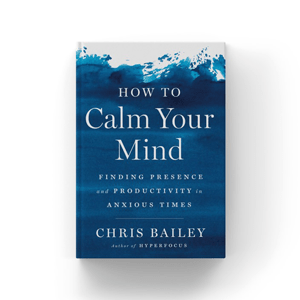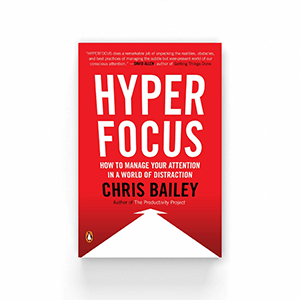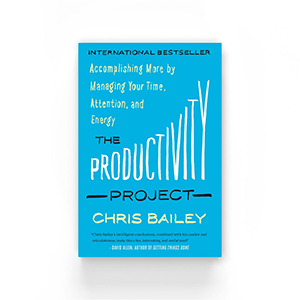I recently had the opportunity to interview Charles Duhigg about how you can use habits to stick to your New Year’s resolutions. Charles is a Pulitzer prize-winning reporter for the New York Times, and the author of the bestselling book, The Power of Habit. The paperback version is available on store shelves pretty much everywhere today.
After you define your goals for the new year, developing good habits is absolutely essential if you want to keep your New Year’s resolutions. Work habits determine how productive you can be, eating habits determine how healthy you become, exercise habits determine how much weight you can lose, and habits in general determine how you live your life. In fact, according to Charles Duhigg, the author of The Power of Habit, as many as “40-45% of our daily activities are habits” which means that “if you don’t get your habits right, you won’t reach your goals.”
The ‘habit loop’
When I spoke with Duhigg, he talked about how you can break down every single habit into three components. “There’s the cue, which is the trigger for an automatic behaviour to start, and then the routine, which is the behaviour itself, and then finally a reward.” And there has been quite a bit of neurological research to back that up. “When cue and a behaviour and a reward become neurologically intertwined, what’s actually happening is a neural pathway is developing that links those three things together in our head.” That’s why habits are so sticky, and why bad habits are so hard to break.

Even though it’s difficult to break a habit (research has shown that it’s way easier to change an old habit instead of trying to extinguish it–more on that in a bit), it’s possible to use the science of habit change to your advantage to either introduce new habits into your life, or change existing, hard-wired behaviours you’re tired of.
Here’s how to do both.
How to adopt a new habit
I personally think that one of the first things you should do after you make a New Year’s resolution is convert it into a habit. For example, instead of making a New Year’s resolution to work out more, form a habit to go for a 15-minute walk to a coffee shop and back every lunch hour. Or instead of making a resolution to lose weight, make a resolution to swap out your sugary morning latte with a green tea.
But that’s way easier said than done, and so one of the things I asked Charles was how to form a brand new habit. The answer, it turns out, is to define a few “cues” to trigger the habit, and then to reward yourself after you follow through with the habit “routine”.
1. Define a few cues
To adopt a new habit, Duhigg recommends that you “think deliberately about the cues and rewards you want to establish in your life that will encourage good behaviour”.
According to Charles, cues that trigger a habit sequence can fall into one of five categories:
- A certain time of day
- A certain place
- The presence of certain people
- A particular emotion
- A preceding behaviour that’s been ritualized
Duhigg recommends you start off by introducing a few cues from a few different categories of triggers. “Your brain will ultimately latch onto one of them, but you want to throw out a bunch of candidates.”
It’s easiest to illustrate that with an example, like making a New Year’s resolution to exercise more. “Let’s say you put your running clothes next to your bed so you see them when you wake up in the morning, and you schedule to go running on Wednesday’s at 8:30 in the morning with one of your best friends.” That example includes a few triggers, including a time of day, a certain place, and the presence of certain people.
2. Reward yourself
After you define a few cues to trigger your new habit, you should then establish a way to reward yourself for completing the routine.
Charles touched on how difficult it can be to routinize new behaviours. “Even if you think you want to start exercising, your brain essentially thinks that you’re a liar and that you don’t actually like exercise. So what you have to do is train your brain so it knows that exercise is linked to something you know that you enjoy, like a piece of chocolate, taking a nice long shower, or spending 15 minutes on Facebook. It doesn’t matter what the reward is. What matters is it’s genuinely rewarding, and that you allow yourself to enjoy that reward.
“Now contrast that with how most people end up starting an exercise routine. They wake up one morning and they go for a run, they come home, and they’re running late because they just spent 20 minutes running. And their kids need to get out the door, so they’re stressed out and rushing through their morning routine. What they’re doing there is effectively punishing themselves for exercising. They’re making things harder after they work out, and that’s exactly the wrong thing to do, because we know that our neurology will latch onto rewards.”
Rewarding yourself after you go through with a routine is how you should solidify the cue, routine, reward sequence in your head. For example, Duhigg suggested that “when you start an exercise habit and you get home from your workout or your run, you should eat a small piece of chocolate”. That may sound like counterintuitive advice on the surface, but when a genuine reward helps you so much in solidifying a habit, it’s no doubt sound advice in the long-run.
After you plan a few cues that will trigger a habit sequence, as well as properly reward yourself afterward, over time you will have to invest less time and willpower into keeping your resolution. Though you may need to be patient while you form new habits, with sufficient cues and a satisfying reward, over time your behaviour will become much easier, and increasingly automatic.
Don’t try to extinguish old habits–change them instead
In The Power of Habit, Duhigg talks about how you can burn through a lot of willpower trying to force yourself to adopt resolutions. Willpower is one of your most valuable resources, and a slew of studies has shown that it can be depleted, which makes forming automatic habits even more important. Rather than trying to extinguish an old habit, Duhigg mentioned that research has shown that “what’s much easier, and much more successful … is to change a habit.”
“As the reward releases more and more neurotransmitters, the neurological connections in that pathway get slightly thicker and thicker, and that makes it easier for impulses to travel down that pathway. So when someone’s trying to extinguish a habit, what they’re trying to do is, through willpower, destroy a neural pathway. It’s pretty hard to will ourselves into changing our brains.”
Just like adopting a new habit, to change an old habit you should start by identifying a cue and a reward, but you should “find a new behaviour that seems to correspond to them” (a new routine). Duhigg recommends that you keep the cue and the reward as similar as possible, because habits can be so ingrained in your brain.
It’s pretty hard to will ourselves into changing our brains.
Cues are pretty easy to identify (because they fall into one of the five aforementioned categories), but rewards can be trickier to identify. For example, let’s say you have a habit of walking to a vending machine at work every afternoon. Your cue is likely the time of day, but the reward your brain is seeking out is more difficult to pinpoint. For example, are you craving some food because you’re hungry? Or are you craving a break from your work, or a way to make your afternoon more interesting?
According to Charles, it’s only “once you identify what reward you’re genuinely craving [that] you can change the behaviour.” Depending on what reward you’re actually seeking in this example, your best substitute behaviours could range from eating an apple if you’re hungry, to taking a walk outside if you need a break, to surfing Facebook for 15 minutes if you’re looking for some novelty.
Once you identify the deeper reward, you can make sure that “the cue and the reward remain pretty stable”, and that “it’s just the behaviour itself that actually changes.”
Anticipate obstacles
Charles talked about how one of the most important parts of keeping habits is “anticipating where the breakdown will occur”, and anticipating any obstacles you will face along the way to achieving your goals.
“Very frequently people will start an exercise routine, and at the end of the month they’re about to go running and something that’s totally anticipated occurs, like they’re going on a trip. In that situation, they forgot to bring their running clothes, or it’s hard when you’re in a hotel to figure out where to go running. You don’t know where the gym is. And these small roadblocks become major impediments, and all of a sudden the pattern gets thrown off and it never reemerges.”
“An obstacle often is very easy to deal with ahead of time, and very hard to deal with at the moment it occurs. Study after study shows that if you [use the habit loop and anticipate obstacles], you’re much more likely to successfully build a new habit”.
An obstacle often is very easy to deal with ahead of time, and very hard to deal with at the moment it occurs.
Think deliberately
Towards the end of our interview, when I asked Charles Duhigg what one productivity tip he would give to someone in the new year, he talked about how important it is to think deliberately about how your life works.
“The truth of the matter is, much of what we do everyday we don’t pay attention to, and that’s a good thing, because it’s not mentally taxing”. But on the other hand, “being more aware of what is driving your behaviour tends to empower you to actually change those behaviours, and that seems to have a significant impact on how you change on a day-to-day basis.”
Understanding your habits is no doubt one of the best ways to become more aware of, and take control over what is driving your behaviour in the New Year.
The Power of Habit is available in paperback pretty much everywhere today. I highly recommend it.




